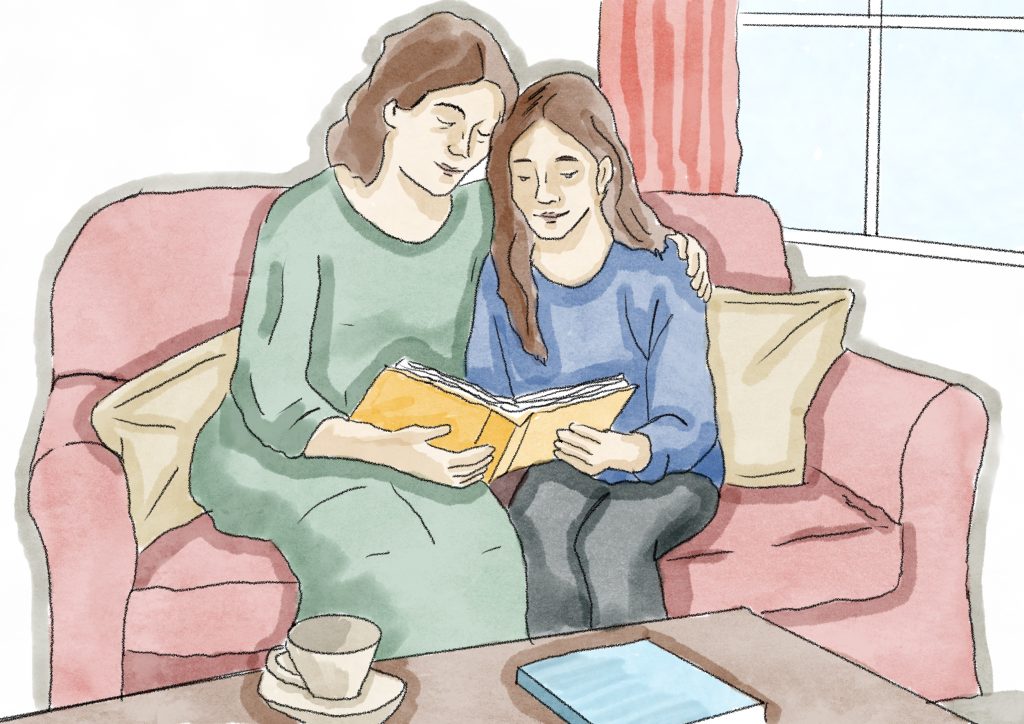
10.4 Sarah’s journey:
Back for my daughter
Sarah, a 36-year-old single mother, had always been a loving and devoted caregiver to her 14-year-old daughter, Emma.

10.4 Sarah’s journey:
Back for my daughter
Sarah, a 36-year-old single mother, had always been a loving and devoted caregiver to her 14-year-old daughter, Emma.
However, the challenges of the global pandemic brought about unexpected mental health difficulties for Sarah. Already inclined to anxiety, she began using cannabis to manage her stress. Unfortunately, without realizing it, this aggravated a hidden psychiatric condition. Over time, whispers in her mind became constant voices, and delusional beliefs intensified, resulting in increasingly unpredictable and alarming behavior.
The breaking point came during a supermarket visit, where Sarah caused a public disturbance. This event led to her admission to an inpatient psychiatric unit.
Signs and Diagnosis
At admission to the hospital, Sarah presented severe symptoms, such as:
Auditory hallucinations urging harmful actions
Persecutory delusions that made her feel constantly watched and threatened
Overwhelming anxiety and agitation
Episodes of aggression
Her use of cannabis, initially as a way to cope, had unfortunately likely aggravated her condition. Sarah’s medical care team conducted a comprehensive evaluation, including an assessment of her psychiatric history, substance use patterns, and social context.
Sarah’s care team performed a thorough assessment, looking closely at her psychiatric history, substance use patterns, and social context. This detailed evaluation helped in establishing the diagnosis of schizophrenia and cannabis use disorder, and creating a comprehensive treatment plan to address both disorders.
Treatment and Support
Sarah’s medical team implemented a multidisciplinary treatment plan, combining medication, therapy, and family support to guide her toward stability.
Throughout this difficult period, her sister, Laura, played an important role, stepping in to care for Emma while also providing strong support for Sarah’s recovery.
Recovery path
Recovery was gradual and marked by small but meaningful milestones over several months:
Weeks 1-2. Initial stabilization was achieved, with a noticeable reduction in aggression and hallucination intensity. Sleep and appetite began to improve.
Weeks 3-4. Sarah gained insight into her condition, recognizing her hallucinations and paranoia as symptoms of schizophrenia. She also began actively participating in therapy sessions.
Months 2-3. Sarah made significant progress in managing her symptoms and coping with cravings. Her family reported improved communication and fewer conflicts during visits.
Month 4. Sarah reached a level of stability that allowed for discharge. She returned home with a clear treatment plan, including ongoing therapy, medication adherence, and community support programs.
The power of family support
Sarah’s recovery was a family journey. Her sister, Laura, became her biggest advocate, balancing caregiving duties for Emma while ensuring Sarah followed the treatment. Open communication with the medical team allowed her family to stay involved in key decisions, providing the steady encouragement Sarah needed to keep going.
Emma also played a vital role in Sarah’s progress. Her presence during visits became a source of motivation, reminding Sarah of her responsibilities as a mother and reinforcing her commitment to recovery.
What Sarah’s story teaches us
Integrated care is essential. Dual schizophrenia needs treatment plans that address both mental health symptoms and substance use simultaneously.
Treating one without the other is rarely effective long-term.
Recovery takes time. Sarah’s journey highlights the importance of patience and perseverance, with progress often measured over months rather than weeks. Celebrate the small victories.
Family involvement is key. The active participation of caregivers not only supports the individual in recovery but also strengthens the caregiving system.
Teamwork leads to better results. Combining medication with tailored therapy and social support creates comprehensive care and improves the chances of lasting recovery. Sarah’s story powerfully demonstrates that recovery, while challenging, is truly achievable with the right support and interventions.
Today, Sarah is back at home, carefully rebuilding her life with Emma while diligently continuing her treatment.
She remains connected to her care team and community resources, building a strong foundation for long-term stability
